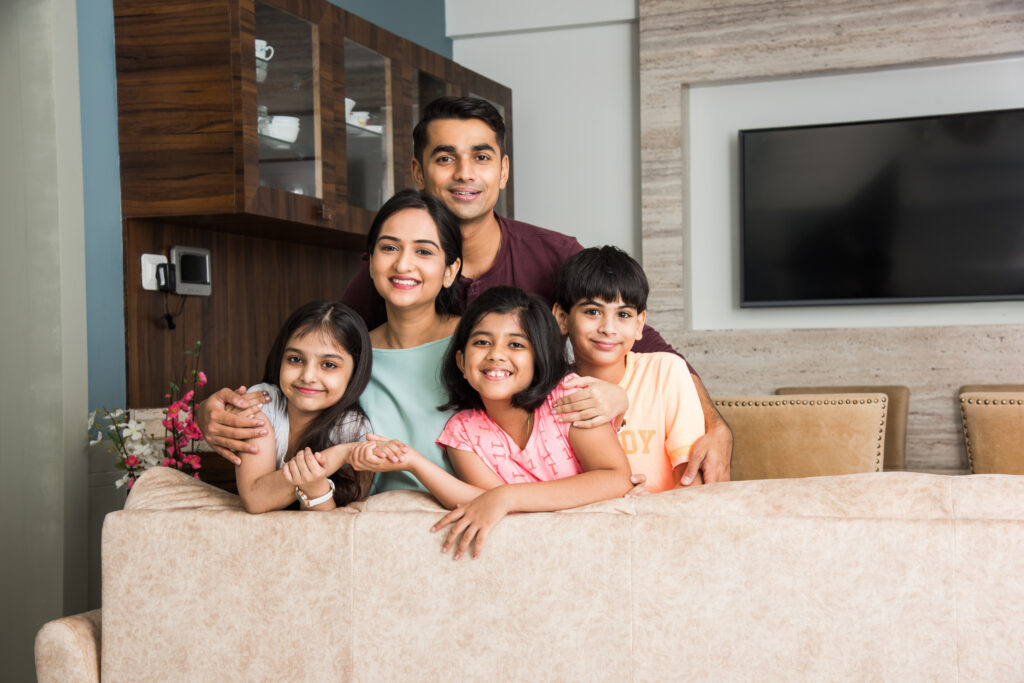No matter the size of your home, every room deserves to be both stylish and functional. The right interior design of room can completely transform how a space feels and works for your daily life. From clever layouts to strategic use of light and colour, thoughtful design can make even a small room feel spacious and inviting. Whether you’re working with a compact bedroom, a narrow living room, or an awkward corner, these tips will help you make the most of what you have.
In this blog, we will explore the most effective and creative interior design of room ideas to help you maximise space without sacrificing aesthetics.
Space-Enhancing Interior Design of Room Tips
The following ideas are tailored to suit a variety of room sizes and styles. Use them individually or combine them to achieve the best results in your home.

1. Use Multi-functional Furniture
One of the most important principles in interior design of room planning is functionality. Opt for furniture that serves more than one purpose. Sofa beds, storage ottomans, nesting tables, and foldable desks save space while providing practical use.
For instance, a bed with built-in drawers helps eliminate the need for bulky wardrobes. A dining table that doubles as a work desk is ideal for small apartments.
2. Keep Colours Light and Airy
Colour has a significant impact on how spacious a room feels. Light shades such as white, beige, pale grey, and pastels help open up a space visually. A bright colour palette reflects natural light and makes a room feel bigger.
When working on the interior design of room, consider painting the walls and ceiling in similar light tones. Use colourful accents in cushions, rugs, or artwork to add personality without overwhelming the space.
3. Use Mirrors Strategically
Mirrors are a powerful tool in the interior design of rooms for small spaces. They reflect light and create the illusion of depth, instantly making a room feel larger. A large mirror placed across from a window can double the natural light in a room.
You can also use mirrored furniture or install a mirror wall to add both function and flair to compact rooms like entryways, bedrooms, or dining areas.
4. Go Vertical with Storage
When floor space is limited, look upwards. Vertical storage is key to maximising the interior design of room in tight spaces. Use tall bookshelves, wall-mounted cabinets, or open shelving to keep items organised without crowding the floor.
In kitchens or bathrooms, vertical racks can store daily essentials. In bedrooms, floor-to-ceiling wardrobes provide more storage while maintaining a sleek look.
5. Keep Layout Open and Flexible
Open layouts are increasingly popular in modern interior design of room concepts. Avoid placing large furniture in pathways or blocking natural movement through the room. Keep the layout as open as possible to make the room feel breathable.
If the space allows, consider removing non-structural partitions to combine two smaller areas into a single open-concept living zone.
6. Use Rugs to Define Zones
Zoning is an underrated trick in interior design of room plans. Use rugs to visually separate areas within a room, such as a reading nook, dining zone, or workspace. This is especially helpful in studio apartments or open-plan homes.
Rugs help define areas without the need for walls. Choose the right size to avoid making the room feel cramped. A larger rug under furniture often makes the room appear more spacious.
7. Choose Sleek and Slim Furniture
Bulky furniture can quickly overwhelm a small space. Choose furniture with slim legs, open bases, or glass surfaces for a lighter visual impact. Floating desks, wall-hung vanities, and minimalist chairs work well for compact spaces.
When planning the interior design of room, always measure your space carefully before purchasing large items. Proportion is key to maintaining balance in any room size.
8. Make Use of Hidden Corners
Every home has unused corners that can be turned into functional nooks. With smart planning, corners can become reading areas, small study zones, or extra storage.
Use corner shelves, compact desks, or custom corner seating to fully utilise these neglected spaces. This is one of the smartest interior design of room tricks to maximise every inch of your home.
9. Keep It Clutter-Free
Clutter can make even a large room feel smaller. For effective interior design of room, embrace minimalism. Display only essential decor items and keep surfaces clean. Invest in hidden storage options like under-bed drawers or cabinets with doors to keep visual noise at bay.
A clean, well-organised space not only looks better but also feels more spacious and serene.
10. Let in Natural Light
Natural light has the power to completely transform a space. Keep windows uncovered or use sheer curtains that let light filter through. Avoid heavy drapes or furniture blocking the windows.
Good natural lighting improves the mood and makes rooms feel bigger and brighter. In interior design of room projects, always prioritise window placement and openness to light.
Conclusion: Design Smarter, Live Better
The best interior design of room ideas is not about how much space you have, but how well you use it. From using multi-purpose furniture to optimising vertical storage and incorporating natural light, small changes can lead to big improvements.
A thoughtfully designed room increases comfort, enhances usability, and reflects your personality. Whether you live in a studio flat or a spacious home, the right interior design approach can help you unlock the full potential of your living spaces.
Start with one room at a time, keep your goals clear, and enjoy the process of creating a space that works for you every day. When in doubt, consult a professional interior designer who can offer customised solutions that fit your home and lifestyle.
📞 Contact us today for a free design consultation and start your journey to a more beautiful home.


